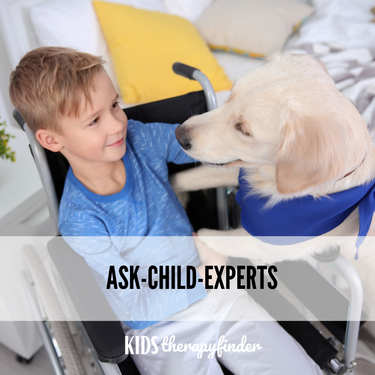
Service dogs for the blind have been common for decades. Today, you see them everywhere as they assist people with a wider range of conditions, and in all settings. So, it’s important to understand and teach our children the etiquette of these encounters.
Children, who often get excited when they see a dog, especially need to be taught how to respond to one – and its handler - while it is on the job.
You’ll find dogs helping people with vision, mobility and hearing impairment, as well as conditions that may not be apparent, such as autism, seizures, posttraumatic stress disorder, food allergies, and diabetes. Yet most people still aren’t certain of the protocol for interacting with a service animal, or its handler.
Service dogs are not pets. They are specially trained for their duties, and it can cost $20,000 or more to equip one for its role. Vests indicate that they are legally allowed to accompany their handler into businesses. The vest also is a sign to the public that the handler has a disability and that the dog is on duty.
There are several things to teach your children about service animals and their handlers. Many of the rules are simply common sense and common courtesy.
There are many age-appropriate resources to help your children understand service dog etiquette.
Easy Science For Kids offers parents and teachers a guide to service animals, which provides fun facts, a Q&A and vocabulary specific to service dogs. You’ll also find a word search game about service animals.
Billy Bear 4 Kids has a service dog coloring page, as does KSDS Assistance Dogs, and ICAN. For teachers and homeschool parents, there are lesson plans available from AKC and The Humane Society.
Have you talked with your child about service dogs? Tell us about it in our Facebook page.
